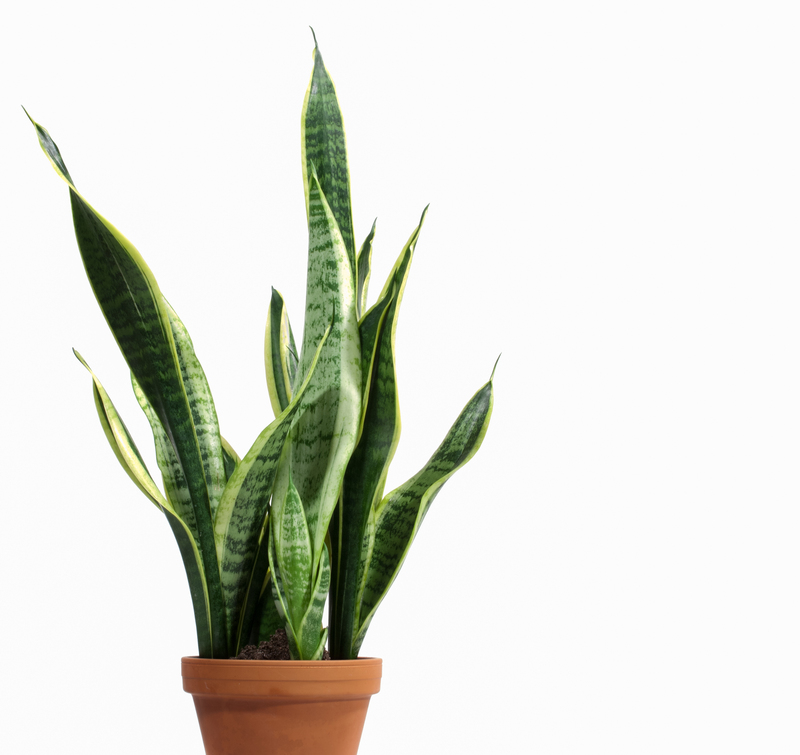Captivating Garden Designs for Your Little Ones
Posted on 16/09/2025
Captivating Garden Designs for Your Little Ones: Creating Magical Outdoor Spaces
Inspiring children to connect with nature is one of the most valuable gifts you can give as a parent. A thoughtfully planned garden designed with kids in mind can become a place of endless learning, laughter, and adventure. In this article, we'll explore captivating garden designs for your little ones that are both enchanting and practical. Discover diverse ideas, expert tips, and step-by-step guidance for creating kid-friendly outdoor spaces that will nurture curiosity and creativity. Whether you have a small backyard or ample grounds, these child-centric garden layouts, features, and activities are certain to ignite imaginations.
Why Design a Garden for Children?
Gardens are more than just outdoor areas--they are living classrooms, sensory playgrounds, and havens for exploration. Designing a garden specifically for children boosts their physical, emotional, and intellectual development. Here's why you should consider dedicated kids' garden designs:
- Promotes physical activity: Running, digging, and exploring helps keep children healthy and active.
- Encourages curiosity: Natural spaces stimulate investigation and a love of learning.
- Develops stewardship and responsibility: Kids who care for plants gain appreciation and respect for nature.
- Sparks creativity and imagination: A magical garden can become anything--from a jungle to a castle--fueling play and storytelling.
- Offers stress relief: Green spaces are soothing and foster mental well-being in children.

Key Elements of Captivating Garden Spaces for Children
Before diving into specific garden design ideas for kids, it's vital to understand the ingredients of a successful children's garden. Consider incorporating these components for a safe, stimulating, and memorable outdoor area:
- Safety first: Prioritize soft surfaces, non-toxic plants, and clear sight-lines for supervision.
- Sensory experiences: Include a variety of textures, colors, scents, and sounds.
- Interactive features: Create opportunities for hands-on engagement--think digging pits, stepping stones, or water play.
- Wildlife attraction: Bird feeders, butterfly gardens, and bug hotels spark interest in nature.
- Personal spaces: Hideaways, tunnels, and secret nooks make children feel the garden is their own special world.
Captivating Garden Design Ideas for Your Little Ones
Ready to turn your backyard into a paradise for young explorers? Here are some engaging children's garden design ideas to inspire your project.
1. Enchanting Fairy Gardens
Capture young imaginations with a magical fairy garden. Use miniature plants, tiny furniture, colorful stones, and whimsical statues to create an enchanting realm. Invite your kids to help arrange fairy houses and paths, or craft decorations from natural materials.
Tips for a captivating fairy garden:
- Choose a shaded, sheltered spot within your garden beds or in a large container.
- Use moss, pebbles, and dwarf plants to mimic a tiny landscape.
- Add storytelling elements--a fairy swing, acorn cups, or a pebble-lined pond.
- Encourage your child to "tend" the garden by watering and rearranging features.
2. Edible Children's Gardens
Engage all senses and teach healthy habits with a child-friendly vegetable patch. Plant easy-to-grow vegetables and fruits, such as strawberries, cherry tomatoes, snap peas, or radishes. Watching, harvesting, and tasting their own produce gives kids a sense of accomplishment and curiosity about where food comes from.
Design essentials:
- Raise beds or containers to kid-height for easy access.
- Include cheerful, colorful plant markers.
- Mix herbs with veggies for delicious scents--basil, mint, and chives are safe and aromatic choices.
- Add a "snacking corner" where kids can pick treats straight from the plant.
3. Sensory Garden Zones
Gardens can be truly captivating for kids when every sense is engaged. Create a sensory-rich garden by dedicating small zones to touch, sound, sight, smell, and taste.
- Touch: Lamb's ear, succulents, ornamental grasses provide intriguing textures.
- Sound: Wind chimes, rustling bamboo, and seed pods create soothing natural melodies.
- Sight: Use vibrant flower beds, painted garden ornaments, and rainbow-themed pathways.
- Smell: Lavender, rosemary, honeysuckle, and scented geraniums enchant the nose.
- Taste: Edibles like nasturtiums, small tomatoes, or alpine strawberries add a flavorful touch.
Tip: Let your child build a "sensory scavenger hunt" to discover new textures and smells within the garden.
4. Natural Play Structures and Adventure Trails
Stimulate active play and gross motor development by weaving natural play elements into your landscaping. Logs, stumps, and stepping stones encourage climbing and balancing, while a simple mulch or pebble trail can become an adventurous "safari route."
- Arrange log rounds for step-and-jump challenges.
- Create a winding path through tall grass or shrubs as a secret trail.
- Install a low rope swing or a hammock between sturdy trees.
- Camouflage a small slide with plants for a blend of nature and fun.
Safety note: Always use untreated, non-slip materials and supervise play structures closely.
5. Wildlife Havens
Spark wonder by welcoming wildlife into your child-friendly garden space. Adding birdhouses, butterfly plants, and bug hotels encourages observation and gentle interaction with nature.
- Grow sunflowers, buddleia, and dill to attract bees and butterflies.
- Hang a simple bird feeder or install a bird bath within view of the play area.
- Stack logs or bundle twigs to make an insect habitat (bug hotel).
- Build a small pond or water dish for frogs, with stones for safe access.
Ask your child to keep a garden notebook to record bird sightings and other natural discoveries.
6. Secret Hideouts and Storybook Spaces
Children cherish private spaces that feel like a world apart. Transform a corner of your garden into a secret hideout with living willow domes, teepees made from poles and climbing beans, or a small tent nestled among shrubs.
- Frame a "doorway" with trellises or arches covered in sweet pea or morning glory vines.
- Use large leafy plants to create hidden areas.
- Set up an outdoor reading nook with weatherproof cushions and a low table for story time.
Encourage your child to decorate their hideout with lanterns, painted rocks, or windmills for a personalized touch.
7. Water Play Features
No captivating children's garden is complete without a place for safe water play. Incorporate a small shallow stream, bubbling fountain, or even a sand-and-water table.
- Use smooth river stones and aquatic plants to create a miniature "riverbank."
- Install rain barrels with attached spigots that kids can fill water cans from.
- Opt for splash mats or portable water play stations for versatility.
- Always supervise water features, and choose shallow or spill-proof designs for safety.
Easy Steps to Design Your Child-Focused Garden
Ready to start planning your captivating garden retreat? Here's a step-by-step approach to bringing your kid-friendly garden ideas to life:
- Assess your space and safety: Survey the area for hazards, sun/shade, and movement patterns.
- Consult your children: Ask what features excite them. Do they dream of a hideout, a maze, or a vegetable patch?
- Draw a simple layout: Sketch key zones (play, planting, quiet areas) and connections between them.
- Select plants carefully: Choose robust, non-toxic, easy-care species.
- Add interactive features: Include as many hands-on elements as your space allows.
- Plan for all ages: Design a space that can evolve as children grow--removable features or plantings that provide changing interests.
- Embrace imperfection: Kid-friendly gardens should feel wild, touchable, and ever-changing.
Best Plants for Child-Friendly, Enchanting Gardens
Choosing the right plants is crucial for creating captivating garden designs for children that are beautiful and safe. Here are top recommendations:
- Sunflowers: Tall, dramatic, and fun to grow from seed.
- Sweet peas: Lovely scent and easy to trellis along fences or teepees.
- Sensory plants: Lamb's ear, ferns, and feather grasses invite touch.
- Edibles: Strawberries, snap peas, cherry tomatoes, mint, and chives.
- Flowering shrubs: Butterfly bush, hydrangeas, and azaleas for vibrant color.
- Ground covers: Creeping thyme, chamomile, or Irish moss for soft walking paths.
Reminder: Avoid planting anything toxic (like foxglove or oleander) or that could cause allergies. Check with your local nursery for safe choices suited to your climate.

Maintaining Engagement: Activities and Seasonal Ideas
To keep your children's outdoor garden design engaging all year round, incorporate simple seasonal activities and traditions:
- Spring: Sow seeds, hunt for bugs, make nature crafts from budding branches.
- Summer: Build sunflower houses, paint stones, organize garden picnics.
- Autumn: Gather leaves for art, pick pumpkins, create fairy houses from acorns and sticks.
- Winter: Fill bird feeders, make ice ornaments, plan next season's planting together.
Let children help with gardening chores--watering, weeding, harvesting--so they feel ownership.
Conclusion: A Magical Childhood Space Awaits
Designing enchanting gardens for your little ones is an act of joy that pays lifetime dividends. With creativity, thoughtful planning, and a dash of whimsy, you can cultivate a vibrant, engaging space that fosters curiosity, movement, and love for the outdoors. Whether you opt for mini-farms, fairy realms, or nature trails, the resulting memories and lessons will endure.
Turn your backyard into a living adventure--full of surprises--where every child can bloom.
FAQ: Captivating Garden Designs for Kids
- Is a large yard necessary for a child's garden?
No! Many captivating children's garden designs work beautifully in small spaces, patios, or even containers. The key lies in imaginative features and interactive elements. - What are the safest materials to use in a kids' garden?
Choose untreated wood, smooth stones, natural mulch, and avoid sharp metal or toxic plants. Always supervise younger children around potential hazards. - How can I encourage reluctant gardeners?
Let kids choose some plants or decorations, involve them in fun projects, and keep gardening sessions brief, varied, and play-focused.
By planting the seeds of wonder today, you help your children grow deep roots of discovery, care, and joy in nature tomorrow!

